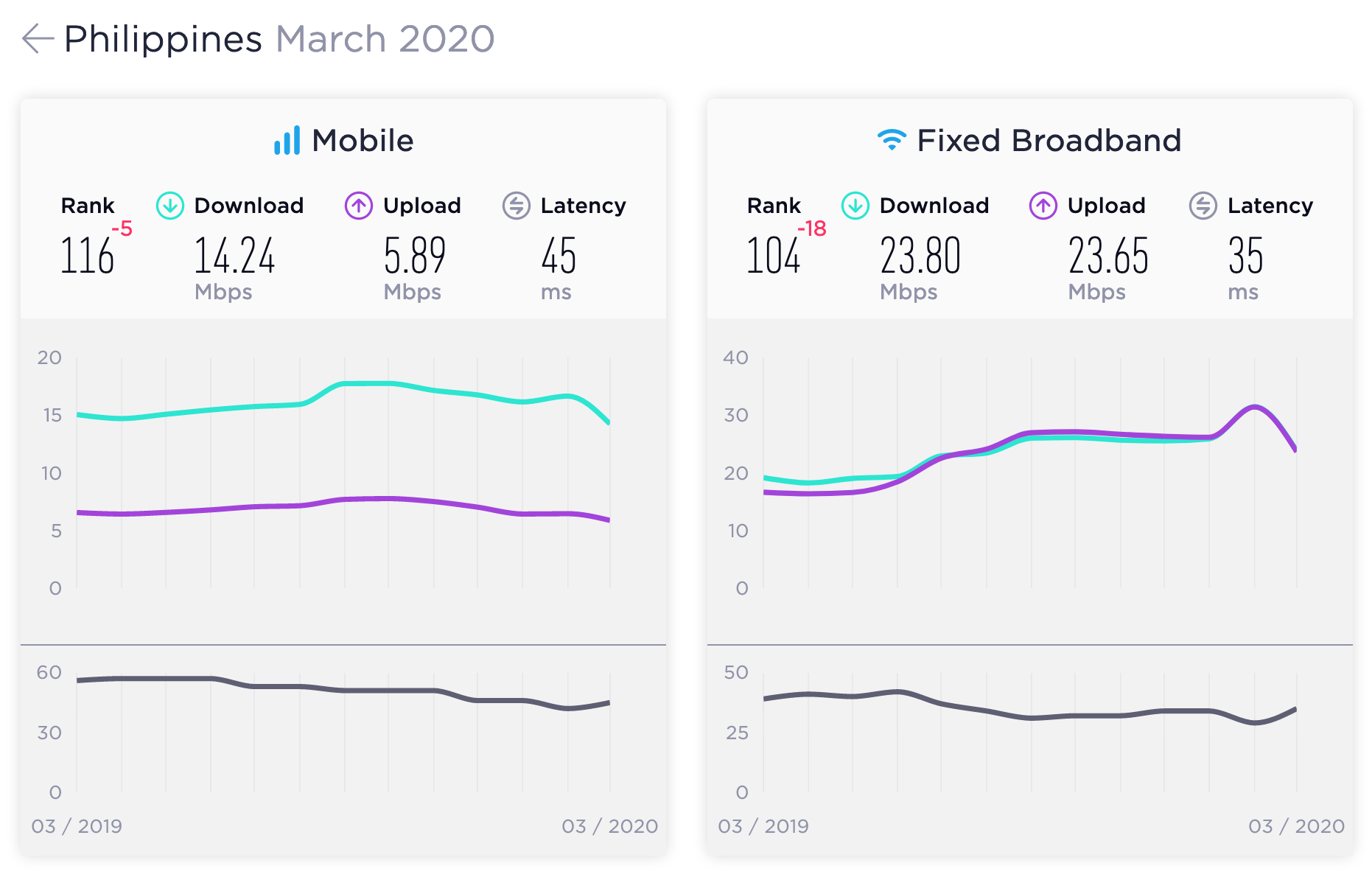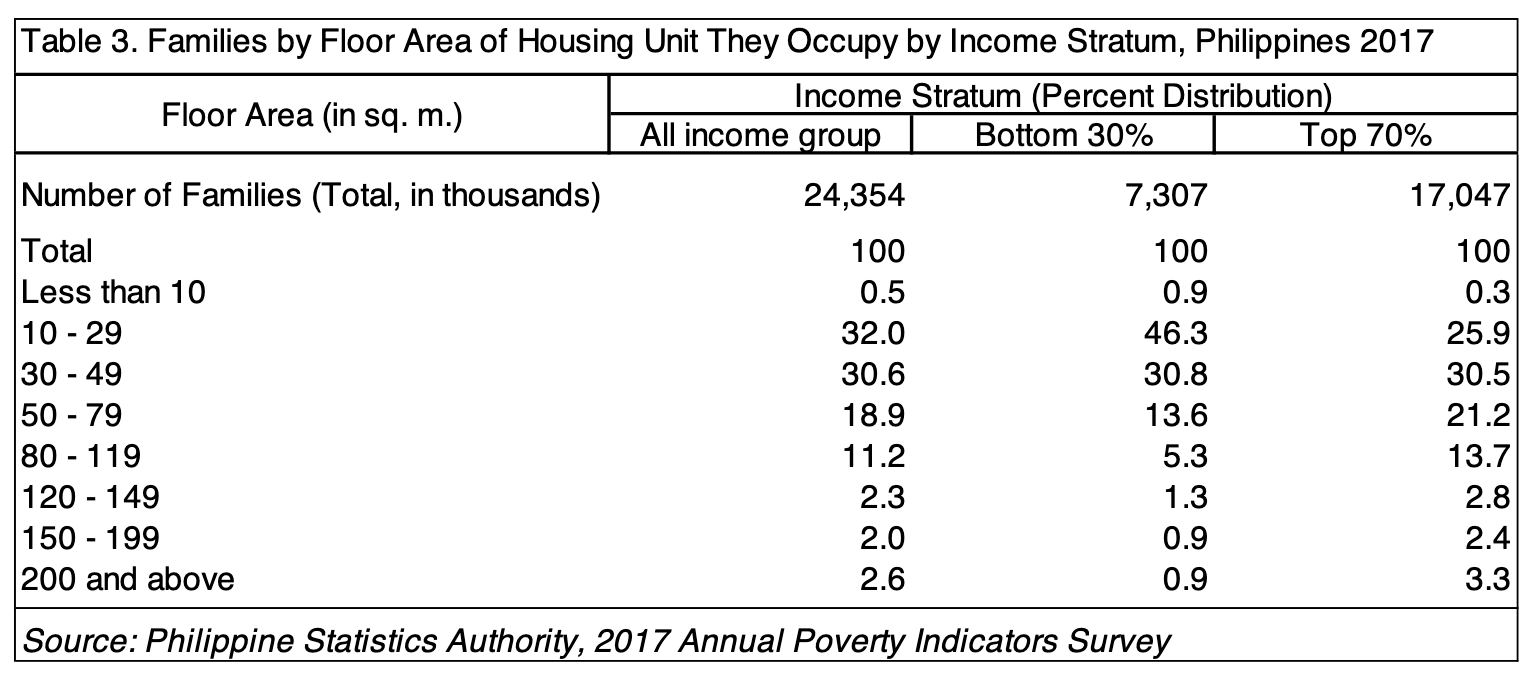By BRENDA BARRIENTOS-VALLARTA
GMA News Research
May 15, 2020
Beginning May 16, Metro Manila, Cebu City, and Laguna will be placed under a modified enhanced community quarantine, which will allow the resumption of select businesses and partial reopening of other establishments.
Under MECQ guidelines, businesses permitted to partially reopen should only have 50% of the workforce on site. The other half should work from home.
LIST: Businesses allowed to operate in areas under modified ECQ
Results of the latest Annual Poverty Indicators Survey (APIS) of the Philippine Statistics Authority paint a picture of the challenges for workers despite the loosening of the quarantine regulations.
For one, while industries open, public transportation is still prohibited. And even those allowed to work from home are not spared from these challenges.

The 2017 PSA survey shows that only a small portion of families nationwide had their own vehicles.
Only 8.4% of households had a car, jeep, or van. But this is true for just 0.7% for the Bottom 30%, which represents the lower 30% of the total families in the income distribution arranged in descending order of the family per capita income; this grouping was used as a proxy for those falling below the poverty line. This is compared to 11.7% for the Top 70%, or higher-income families.
Note: Based on the 2017 APIS, the estimated number of families was 24.4 million with an average family size of 4.3 persons. Of the total families, 7.3 million belonged to the Bottom 30% stratum and 17 million in the Top 70% stratum. The average family size of those in the Bottom 30% stratum tend to be higher (5.4) than the Top 70% group (3.9)
Meanwhile, 31.7% of families had a motorcycle or tricycle. This consists of 36.5% of the higher-income households and 20.3% of lower-income households.
Mobility is a problem with the suspension of public transport. But even after this is restored, those without their own vehicles are in for a tough time.
To follow social distancing protocols, transport officials have proposed limiting the number of commuters in buses and trains. During the May 11 Senate hearing on the transport sectors’ response to COVID-19, Transportation Undersecretary for Railways Timothy John Batan revealed a plan to reduce the capacity of MRT to 14%, specifically to limit the number of passengers per wagon to just 51 compared to the usual 392 per wagon. UV Express capacity will also be lessened to just two passengers per row. The Metro Manila Development Authority also said tricycles may be allowed to ply the road but with only a single passenger each.
All these pose the possibility of long waiting times in terminals and trains. The MRT has said that wait times could last two to three hours under the new system, compared to 30 minutes under the old one.
Computers, phones
Based on the 2017 APIS, only 22.4% of households had their own personal computer.
Families belonging to the Top 70% had higher access to personal computers at 30.4%. Only 3.6% of families belonging to the Bottom 30% had their own personal computer.
In contrast, more people in the Philippines have access to a cell phone than to a toilet. The cellular phone was the most common household appliance in Filipino homes, followed by television.
The PSA survey noted that 87% of households had a cellular phone. Some 91% of families in the higher income households and 77.7% of low-income families had at least one cellular phone.
Only 6.5% of households owned a landline/wireless telephone but there was a big disparity between the income groups: 9.2% of the Top 70% families had them compared to merely .4% of the Bottom 30% families.
Internet speed
Based on the Speedtest Global Index, a service that tracks internet speed data from around the world, the Philippines ranked 116th in the world for mobile speed and 104th for fixed broadband speed in March 2020.
The Philippines' average mobile internet download speed of 14.24 Mbps and upload speed of 5.89 Mbps for March 2020 are well below the global averages of 30.47 Mbps download and 10.73 Mbps upload.
For fixed broadband speeds, the global average for March 2020 was 74.64 Mbps download and 40.07 Mbps download. Ours were much slower—23.80 Mbps download and 23.65 Mbps upload.

House size, air conditioning
On top of technology headaches, employees also face the challenge of working within the confines of mostly small homes, in the presence of their families and uncomfortable work stations.
The PSA survey shows that 62.6% of families were residing in housing units with floor area of 10 to 49 square meters. Some 32% of families lived in houses with a floor area of 10 to 29 sqm.

Most (46%) of the families in the Bottom 30% occupied houses 10 to 29 sqm in floor area.
Only 13.7% of households had access to air conditioning units, the survey said. Nearly 1 in 5 higher-income households had access to air conditioning. But less than 1% of the Bottom 30% had aircon.